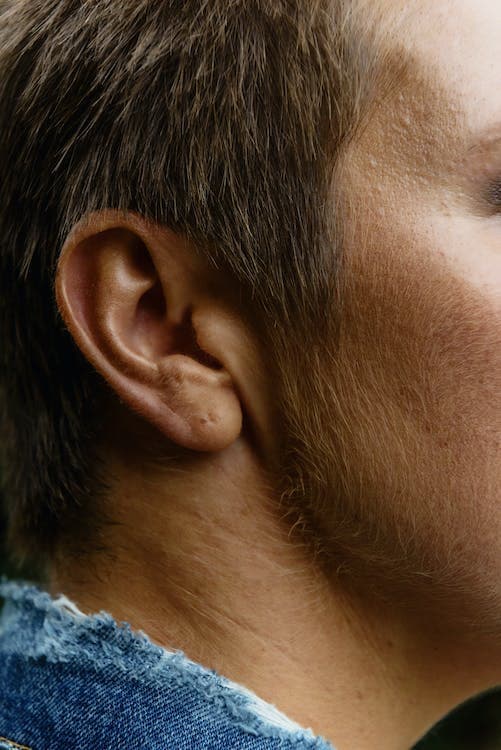
The key to understanding hearing loss is learning what is happening inside your ear. Say that you hear an ambulance speed past. The sound of the sirens enters your eardrum in the outer portion of your ear. Three tiny bones in your middle ear start to move because your eardrum vibrates. These bones push the sound of a fluid-filled chamber in your inner ear called the cochlea.
Lined with tiny vibrating hair, the cochlea receives the sound waves converting them to an electrical signal. This signal sends a message to your brain that tells you that you hear sirens, but hearing loss can occur when the connections from the ear to the brain are interrupted.
Possible Causes of Hearing Loss
The cause of hearing disruption is varied and can damage the delicate structures in the ear. Pressure changes when flying in an airplane or deep sea scuba diving can cause damage. A person might experience a head injury or be exposed to extremely loud noises.
Childhood illnesses or viruses like measles, mumps, and meningitis can also damage the ear. Occasionally earwax will build up in your ear and diminish your hearing. A mother can pass infections or diseases to an unborn child. This can affect the health of the infant.
The gradual loss may occur as you age, even if you don’t have an illness or injury.
Types of Hearing Loss
Conductive hearing loss occurs when there is damage or other problems to your outer or middle ear. Your eardrum may not vibrate properly when you hear sounds, or the tiny bones in your middle ear may not transfer sound to the inner ear.
If there is a problem with the inner ear, it is called Sensorineural hearing loss. Damage or disease may have caused the tiny hair cells that move through the ear to stop working. Or, it may be that your stem cells in the ear can’t keep up with the natural repair process. The nerve that runs from the ear to the brain, called the auditory nerve, might be damaged.
There are situations when you might experience hearing problems with both your inner and outer ears. You might be experiencing mixed hearing loss.
Anything that causes conductive hearing loss can lead to mixed hearing loss. This occurs when both conductive and sensorineural hearing loss takes place. An example would be if you have hearing loss because you work around loud noises, and you have fluid in your middle ear.
The two together might make your hearing worse than it would be if you were experiencing one of the side effects.
What are the Symptoms of Nerve Deafness Hearing Loss?
- Sounds may be louder in one ear.
- Listening to conversations may be difficult to follow.
- Noisy areas make it more challenging to hear.
- Men’s voices are easier to hear than women’s voices
- High-pitched sounds become difficult to distinguish from one another.
- Voices sound muffled or faint
- Background noise reduces hearing of conversations
If you have diminished hearing, you may be suffering from Neuropathy Spectrum Disorder.
What is Auditory Neuropathy Spectrum Disorder ( Nerve Hearing Loss)?
Auditory Neuropathy occurs because there is a problem with the nerves sending messages from the ear to the brain. The brain is designed to hear messages. When there is damage to the inner ear, or the hearing nerves are disrupted, the message doesn’t get through correctly.
This disorder occurs at any age, from infancy through adulthood.
Currently, there is yet to be exact data on the number of people affected by auditory neuropathy. However, current research implies that auditory neuropathies play a vital role in hearing impairment and deafness.
During a hearing test with an audiologist or hearing specialist, the hearing sensitivity is tested. This test helps diagnose the severity of hearing loss from normal to mild to severe.
Nerve Hearing Loss Indicators
- Poor speech-perception abilities or trouble understanding speech clearly
- Impairment in speech perception than predicted by hearing experts
- Capable of hearing certain sounds but unable to recognize spoken words.
- Individuals complain of sounds being out of sync or fading in and out.
Auditory Neuropathy Diagnosis
Several tests are utilized to diagnose Auditory Neuropathy
- Auditory brainstem response (ABR) –implements a series of sounds and tests for brain wave pattern responses. The result is little or no auditory neuropathy response.
- Otoacoustic emissions (OAE) – Checks for healthy and functioning hair cells by placing a microphone into the inside of the ear canal. This checks to determine if the hair cells are working. The microphone can pick up the faint sounds made by the hairs as they respond to noise. Frequently, the result show there is some function of the hair cells.
- Other tests – Other tests, like a check for multiple sclerosis may be administered to rule out other conditions.
If you feel someone in your life is suffering from nerve deafness hearing loss, contact Hearing Associates of Las Vegas. We are committed to helping you and your loved ones to hear better.



Leave a Reply